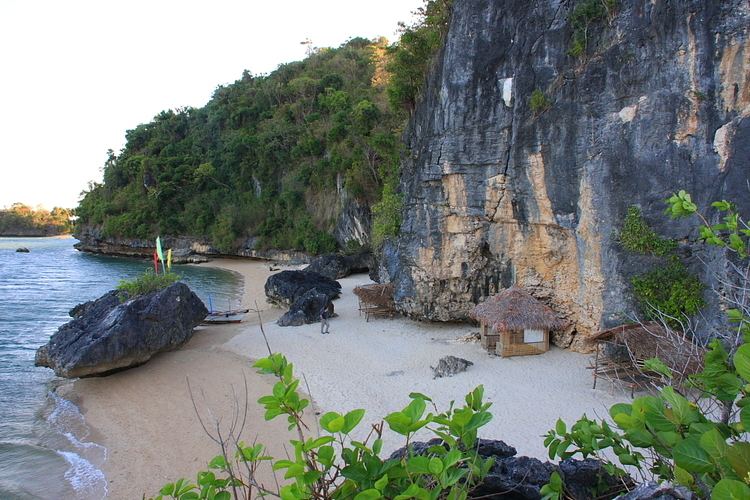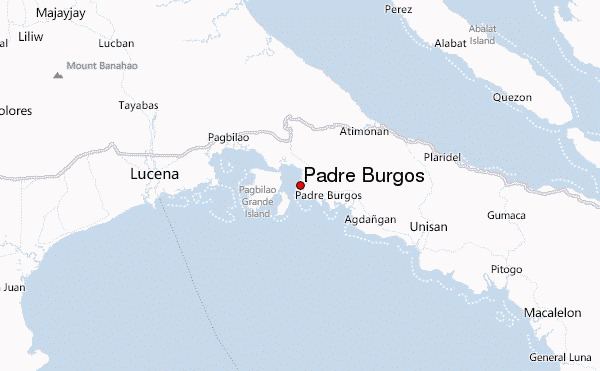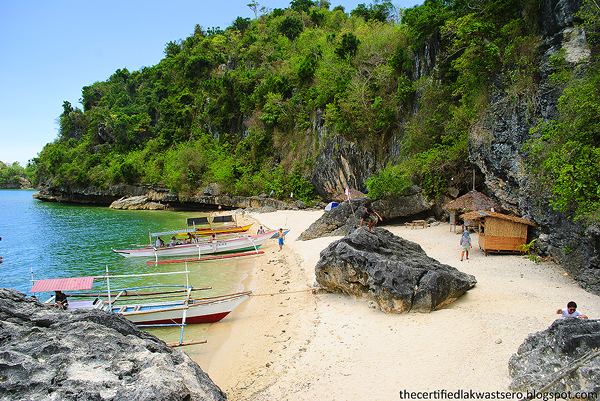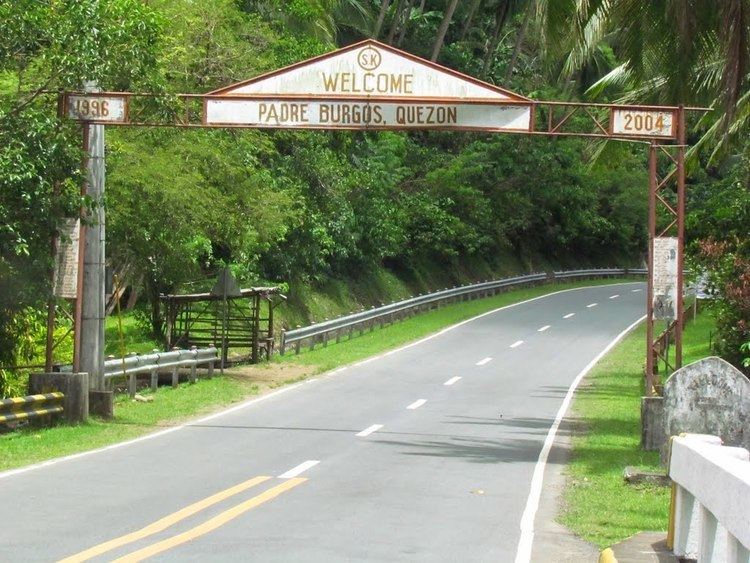Founded February 17, 1917 Time zone PHT (UTC+8) Dialling code 42 | District 3rd district Barangays Area 69.1 km² Population 22,460 (2015) | |
 | ||
Weather 24°C, Wind N at 10 km/h, 82% Humidity | ||
Island hopping in borawan island padre burgos quezon marh 6 2016
Padre Burgos is a fourth class municipality in the province of Quezon, Philippines. It is located on the Bondoc Peninsula just east of Lucena City, the provincial capital, and named after José Burgos. According to the 2015 census, it has a population of 22,460 people. It is bounded on the north by Atimonan, on the west and north-west by Pagbilao, on the east by Agdangan, and on the south by the Tayabas Bay.
Contents
- Island hopping in borawan island padre burgos quezon marh 6 2016
- Padre burgos quezon philippines
- Barangays
- History
- Laguimanoc Festival
- Popular Culture
- References

The town is notable for its unspoiled beaches and the Tulay Buhangin (Tagalog for "sand bridge"). All the population are of Tagalog descent. The economy is primarily based on coconut husking and farming. Local tourism is also on the rise.

Padre burgos quezon philippines
Barangays
Padre Burgos is administratively divided into 22 barangays.
History

Padre Burgos was formerly known as Laguimanoc due to the shape of the coastline which resembles the bill of a chicken or “manok”. Another version is that chickens were so abundant in the town that hawks swept down on the place to snatch chicks from their mothers. When hawks flew overhead, as warning to their neighborhood, people shouted “Hawk Manok” or “Lawin-Manok”.

On January 1, 1917 the village of Laguimanoc, which was formerly a barrio of Atimonan, became a municipality. Ten years after, the town’s council changed the name to Padre Burgos, in honor of one of the country’s martyrs, Fr. Jose P. Burgos. The streets were named after local leaders who rendered valuable services to the community. Because of the physical and topographic conditions of the town, four sitios where clusters of houses were became the main district of the town namely Campo, Burgos, Basiao and Bundok-Punta. The community converged to be in this particular spot because of its sea which made this town as port of Laguimanoc. In the early days this port offered a good wharf for vessels plying between Manila and southern Luzon. This was also a port of call for ships exporting lumber to Europe during the Spanish regime. In this town was the residence of the “Alcalde Mar” or Port Officer.

Business and other industries prospered and people conglomerated in this spot. Spots of the historical interest are the wharf symbol of commercial progress, the old church with the old-fashioned “canyon” markers of the people’s religious faith, the Bag Cement Slabs and Stone quarries mute testimonies of the effervescent power and grandeur of the early foreign settlers, the hills near the railroad station where the Japanese tortured and massacred civilians in the barrios of Marao and Polo where the Hunter’s guerillas built their camps.
Laguimanoc Festival

A festival celebrated on February 17 every year. This feast explains the history of the municipality. Laguimanoc was the former name of the municipality before it was renamed to Padre Burgos.
Popular Culture
This island was also set from the movie Alkitrang Dugo in 1975.

